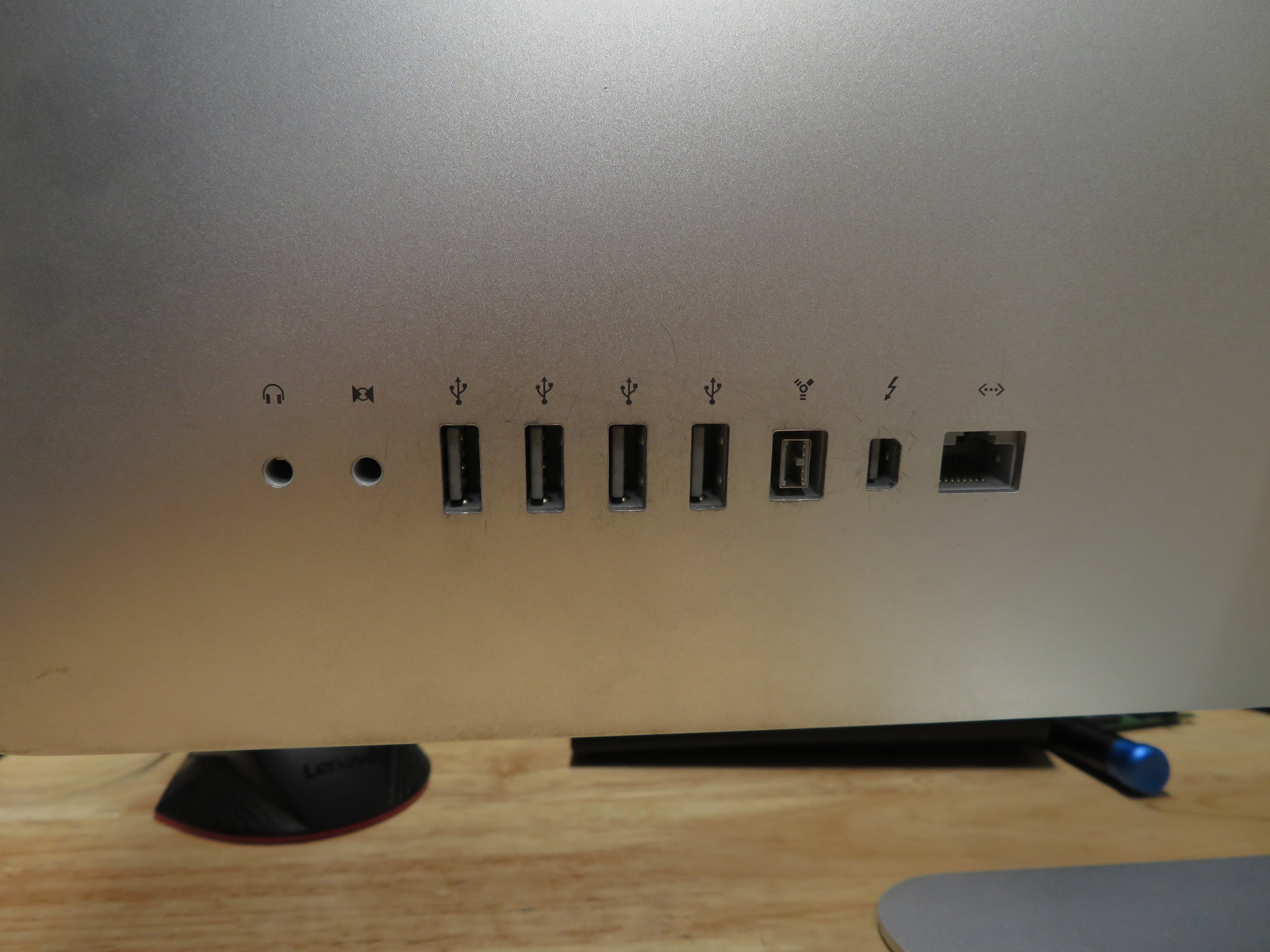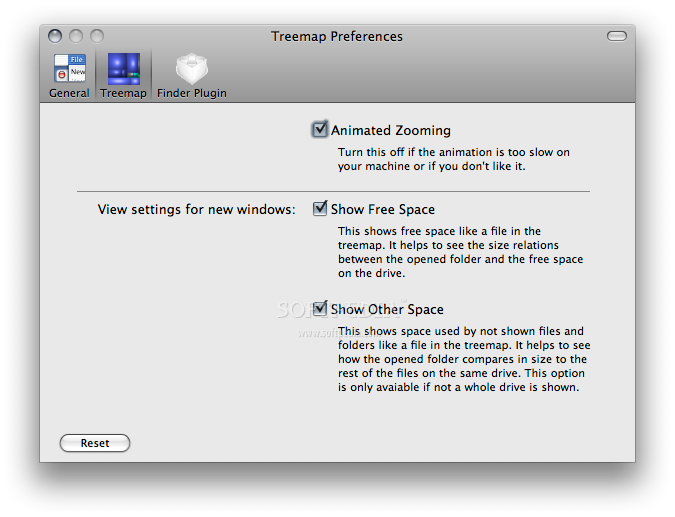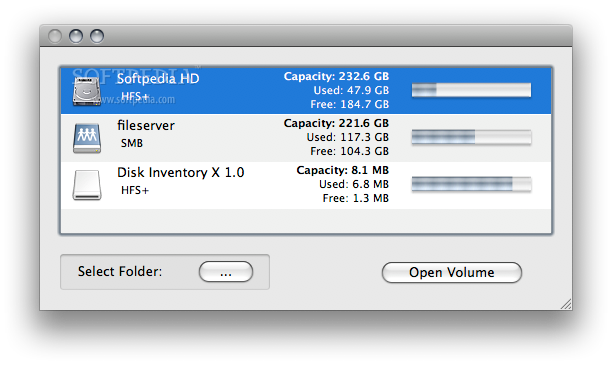

- #DISK INVENTORY X FOR 10.13.6 UPGRADE#
- #DISK INVENTORY X FOR 10.13.6 PRO#
- #DISK INVENTORY X FOR 10.13.6 PLUS#
MacRumors: Mac Pro CPU Compatibility List. #DISK INVENTORY X FOR 10.13.6 UPGRADE#
Cylinder Mac Pro 2013 CPU Processor Upgrade. This varies based on your local markets, as the European markets tend to be much more expensive than North America.Ĭredit to the CPU list goes to Mac Rumors forum member ActionableMango. the E5-2695 is considerably cheaper on aliexpress. Unlike the previous Mac Pros, the Mac Pro 2013 was only offered in a single CPU configuration.įrom personal observation, the E5-2697 can be found cheaper on eBay and local used markets (in the US) vs. Only four CPU configurations were offered by Apple, E5-1620v2, E5-1650v2, E5-1680v2, and the E5-2697v2, but users soon discovered that the E5 v2 family was compatible. This is a build to order option only.Īpple has never acknowledged the upgradability of the Mac Pro CPU, but the Mac Pro 2013's CPU is not soldered in thus making it upgradeable. Apple Mac Pro "Twelve Core"* 2.7 GHz, 12 GB of RAM (16 GB after April 4th), 256 GB SSD, and dual FirePro D500 6 GB of GDDR5 (12 GB total).  Apple Mac Pro "Eight Core" 3.0 GHz, 12 GB of RAM (16 GB after April 4th), 2256 GB SSD, and dual FirePro D500 6 GB of GDDR5 (12 GB total). Apple Mac Pro "Six Core" 3.7 GHz, 12 GB of RAM (16 GB after April 4th), 256 GB SSD, and dual FirePro D500 3 GB of GDDR5 (6 GB total). Apple Mac Pro "Quad Core" 3.7 GHz, 12 GB of RAM, 256 GB SSD, and dual FirePro D300 2 GB of GDDR5 (4 GB total). Apple has only made one minor change in the past six years to the Mac Pro 2013 by removing the original base configuration and lowering the remaining models' prices. ConfigurationsĪpple has only shipped a grand total of 3 base configurations with a fourth build-to-order option for the 12 core CPU. For all other models, I've written a massive guide, The Definitive Classic Mac Pro (2006-2012) Upgrade Guide. Please note This guide only covers the 2013 Mac Pro. For this guide's purpose, I will refer to the Mac Pro "trash can" as 2013 (as does much of the internet). The other terms for these computers are divided between "Cheesegrater" (2006-2012) and "Trash can" (late 2013) or "Cylinder". The Mac Pro line debuted in 2006 and has had six major iterations by Apple's nomenclature, 1.1, 2.1, 3.1, 4.1, 5.1, and 6.1. Edit: The Mac Pro 2019 marks an expensive return to PCIe. Perhaps the 2019 Mac Pro a return to PCIe, but more than likely, 2013 will be the template. It's the bridge to a by-gone era, where CPUs and storage and even GPUs were removable. Only the 2019 Mac Pro since it has allowed for the range of user servicability (although the iMac 5k is a close second). Despite its limited upgradability, the computer is a modular design, and nearly every part of significance can be replaced. Despite the naysayers, the Mac Pro 2013 isn't without its fans (no pun intended), as at the time of its unveiling, it was a powerful, quirky computer in a diminutive form factor. Apple also took steps to extend its repair program, but problems persist. The Mac Pro 2013 has been prone to an abnormal rate of failures due to heat, with a nameless Apple exec quoted as saying, "think we designed ourselves into a bit of a thermal corner if you will". After a few positive reactions by publications for its foreign looks, it quickly became snubbed for its lack of upgradability, stability, and Apple's complete and absolute antipathy (verging on enmity) towards it. The 2013 Mac Pro was conceived as the original Mac Pro's successor, eschewing the modularity for a (debatably) stylish and radical redesign.
Apple Mac Pro "Eight Core" 3.0 GHz, 12 GB of RAM (16 GB after April 4th), 2256 GB SSD, and dual FirePro D500 6 GB of GDDR5 (12 GB total). Apple Mac Pro "Six Core" 3.7 GHz, 12 GB of RAM (16 GB after April 4th), 256 GB SSD, and dual FirePro D500 3 GB of GDDR5 (6 GB total). Apple Mac Pro "Quad Core" 3.7 GHz, 12 GB of RAM, 256 GB SSD, and dual FirePro D300 2 GB of GDDR5 (4 GB total). Apple has only made one minor change in the past six years to the Mac Pro 2013 by removing the original base configuration and lowering the remaining models' prices. ConfigurationsĪpple has only shipped a grand total of 3 base configurations with a fourth build-to-order option for the 12 core CPU. For all other models, I've written a massive guide, The Definitive Classic Mac Pro (2006-2012) Upgrade Guide. Please note This guide only covers the 2013 Mac Pro. For this guide's purpose, I will refer to the Mac Pro "trash can" as 2013 (as does much of the internet). The other terms for these computers are divided between "Cheesegrater" (2006-2012) and "Trash can" (late 2013) or "Cylinder". The Mac Pro line debuted in 2006 and has had six major iterations by Apple's nomenclature, 1.1, 2.1, 3.1, 4.1, 5.1, and 6.1. Edit: The Mac Pro 2019 marks an expensive return to PCIe. Perhaps the 2019 Mac Pro a return to PCIe, but more than likely, 2013 will be the template. It's the bridge to a by-gone era, where CPUs and storage and even GPUs were removable. Only the 2019 Mac Pro since it has allowed for the range of user servicability (although the iMac 5k is a close second). Despite its limited upgradability, the computer is a modular design, and nearly every part of significance can be replaced. Despite the naysayers, the Mac Pro 2013 isn't without its fans (no pun intended), as at the time of its unveiling, it was a powerful, quirky computer in a diminutive form factor. Apple also took steps to extend its repair program, but problems persist. The Mac Pro 2013 has been prone to an abnormal rate of failures due to heat, with a nameless Apple exec quoted as saying, "think we designed ourselves into a bit of a thermal corner if you will". After a few positive reactions by publications for its foreign looks, it quickly became snubbed for its lack of upgradability, stability, and Apple's complete and absolute antipathy (verging on enmity) towards it. The 2013 Mac Pro was conceived as the original Mac Pro's successor, eschewing the modularity for a (debatably) stylish and radical redesign. #DISK INVENTORY X FOR 10.13.6 PLUS#
The Mac Pro 2013 has the dubious honor as the longest produced Macintosh, besting the Macintosh Plus produced from 1986 to 1990 without an upgrade. While most users (and Apple engineers) probably prefer moniker "cylinder," the trash can title stuck due to its obvious physical characteristics. Is there a need or demand for such a guide? I don't know, but here we are, and while the origins are jocular the rest of this guide is serious. The 2013 Mac Pro is a tale of hubris for Apple, as it over-promised and under-delivered, and is considerably less upgradeable than its predecessor.

The Definitive Trash can Mac Pro 2013 upgrade guide started in jest on social media as the guide no one wanted, seeing as the Mac Pro 2013. To mark the first anniversary of my wildly successful blog post (garnering tens of thousands of views), The Definitive Classic Mac Pro (2006-2012) Upgrade Guide, I'm proud to announce a sequel.







 0 kommentar(er)
0 kommentar(er)
